.

Captain Picard orders tea
.
“Tea, Earl Grey, hot.” Who doesn’t remember that famous command by Captain Picard’s of TV’s “Star Trek: The Next Generation”? While no one’s yet invented a replicator that can brew a cup of tea out of thin air, scientists have taken in step in that direction by creating an amazing replica of a Martian meteorite using a 3D printer.
.
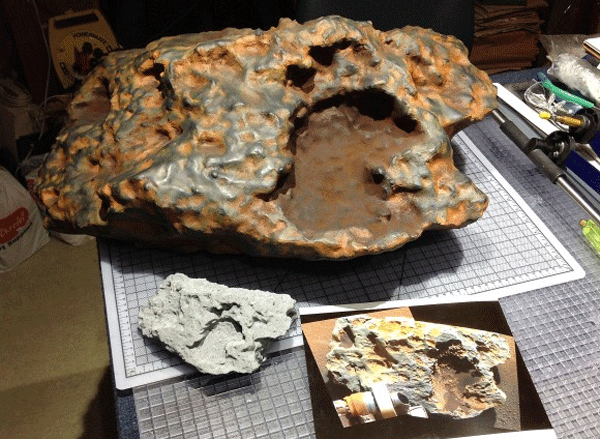
Without the fuss and expense of a sample retrieving mission to Mars, NASA scientists now have a realistic, true to life facsimile of the ‘Block Island’ meteorite discovered by the Opportunity Rover in 2009. Block Island, an iron-nickel meteorite similar to those found at Meteor Crater in Arizona, is the largest meteorite found on the Red Planet.
.
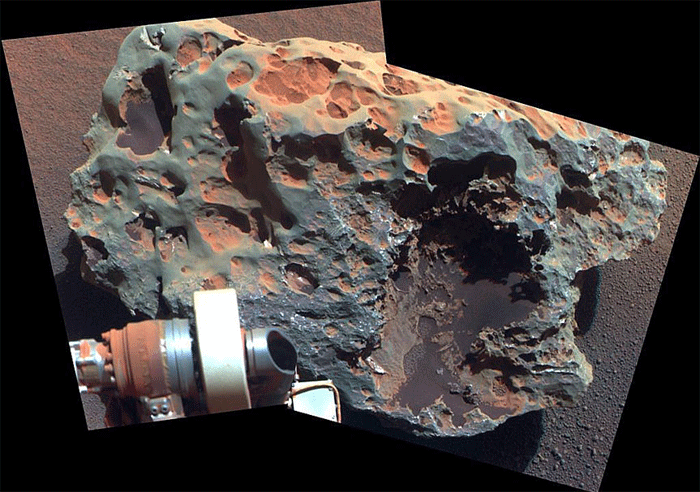
The real Block Island, the largest meteorite yet found on Mars, photographed by Opportunity’s panoramic camera.Credit: NASA/JPL-Caltech/Cornell
.
Measuring about two feet (60 cm) across, it’s about the size of picnic cooler and weighs an estimated 1,000 pounds. The replica’s made of plastic – you could tote it around like a … picnic cooler.
Analysis of Block Island’s composition using the rover’s alpha particle X-ray spectrometer confirmed that it’s rich in iron and nickel. Scientists based the design of the plastic meteorite on detailed measurements and stereo images taken by Opportunity’s panoramic camera.
.
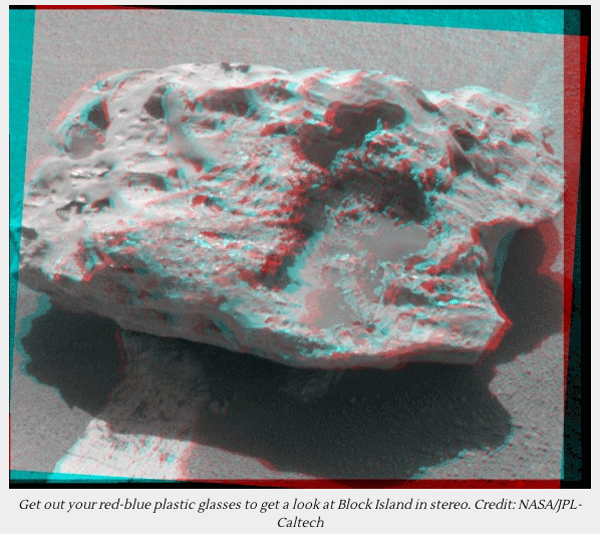
The rover made a 360-degree study of the meteorite five years ago taking measurements and many stereo images. But because Opportunity couldn’t see every square inch of the rock, the missing data created holes in the computer model, making it a poor candidate for 3D printing.
Last summer, scientists got around that problem by filling in the missing data and building small scale models of Block Island. To build the life-sized rock, they created depth meshes of the meteorite’s surface from six positions, then combined them into a three-dimensional digital model, according to researcher Kris Capraro of NASA’s Jet Propulsion Laboratory.
.
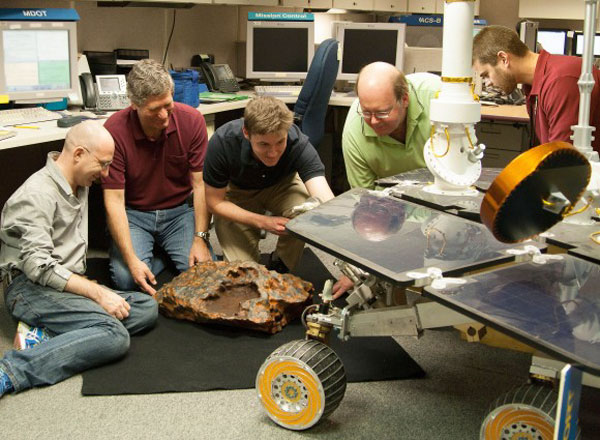
Researcher Kris Capraro (second from left) adds the finishing touches of realistic color to a model of the “Block Island” meteorite.Credit: NASA/JPL-Caltech
.
The printer built the meteorite from ABS plastic, the same material used in Lego bricks, with cord the width of the plastic line in your weed-whacker. One small problem remained before the replica could be executed – it was too big to fit in the printer’s building space. So researchers broke up the computer model of the meteorite into 11 sections. Printing took 305 hours and 36 minutes.
.
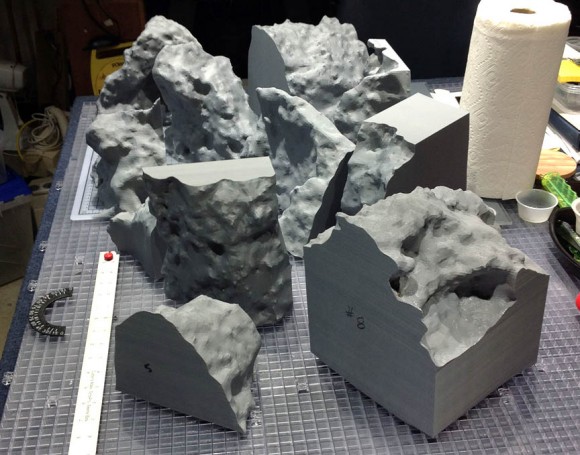
Researchers created each of 11 pieces in the 3D printer and glued them together to build the true-size model. Credit: NASA/JPL-Caltech
.
The sections were assembled and then painted to match the real rock. Said Capraro: “it’s the next best thing to bringing back real Martian rock samples back to Earth.”
Scientists hope someday to use 3D printing to not only replicate more Mars rocks but terrains across the solar system.
Quelle: UT
5589 Views
